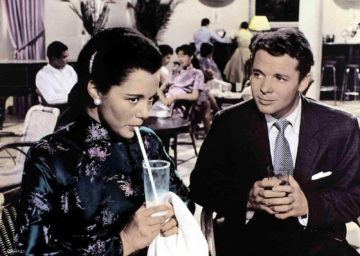Joel Whitney in The Baffler:
 WHEN THE FILM VERSION of Graham Greene’s novel The Quiet American was released in early 1958 Greene was not happy. He skipped the premieres in New York and Washington, D.C., and later called the movie “a complete travesty.” Greene usually liked to see his novels adapted, but not this time. What Greene was trying to say about American ignorance and arrogance in foreign affairs was distorted—in fact, turned upside down by a Cold War, McCarthy-era fear of bringing a movie to the public that might be seen as “anti-American.”
WHEN THE FILM VERSION of Graham Greene’s novel The Quiet American was released in early 1958 Greene was not happy. He skipped the premieres in New York and Washington, D.C., and later called the movie “a complete travesty.” Greene usually liked to see his novels adapted, but not this time. What Greene was trying to say about American ignorance and arrogance in foreign affairs was distorted—in fact, turned upside down by a Cold War, McCarthy-era fear of bringing a movie to the public that might be seen as “anti-American.”
There were two key figures who prevented the faithful adaptation of Greene’s novel. One was the director and screenwriter Joseph Mankiewicz. Known for such mid-century blockbusters as A Letter to Three Wives (1949), All About Eve (1950), and Guys and Dolls (1955), Mankiewicz had a reputation as a liberal patriot. Greene was initially hopeful about the film, writing producers to suggest locations in Vietnam, the setting for the novel. The other figure was Edward Lansdale. He had spent time in Vietnam in the 1950s as a CIA agent with an Air Force cover. In 1956 Mankiewicz traveled to Saigon, where he met members of the American Friends of Vietnam, the so-called “Vietnam Lobby,” including Lansdale. It was a fateful turn. Mankiewicz hired Lansdale as a film consultant. Of course, the CIA man had no respect for Greene, a British novelist who could not be trusted to understand American strategies to defeat communism in Vietnam.
More here.
